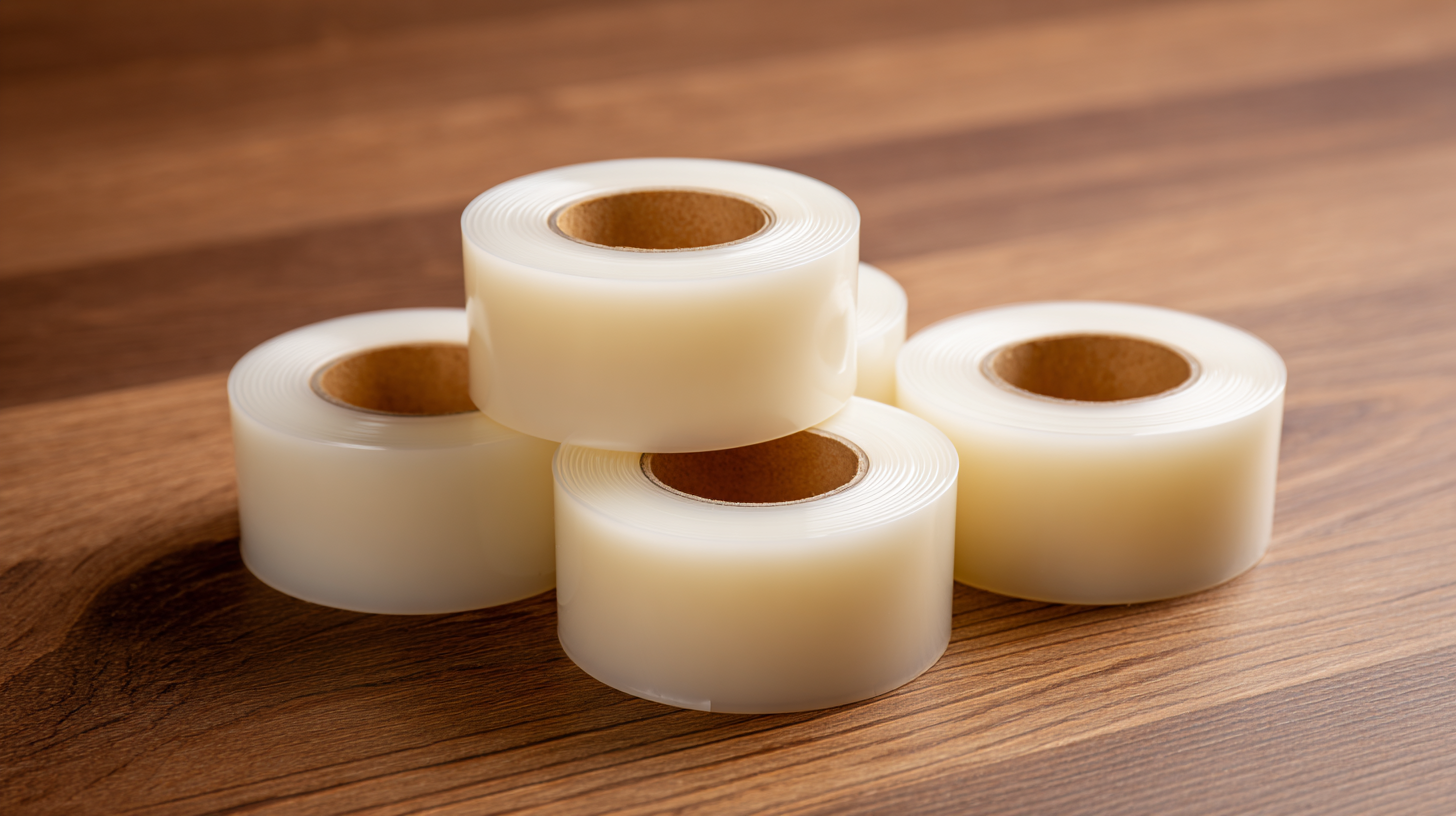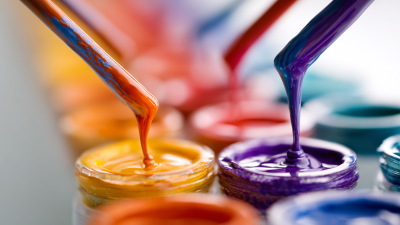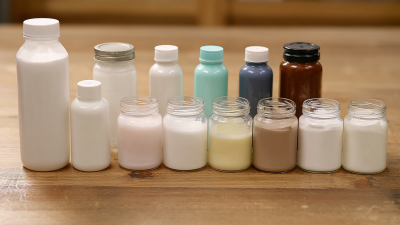Choosing the right adhesive for your projects can significantly impact the quality and durability of your work, especially when it comes to materials like PVC. According to a report from the Adhesive and Sealant Council, the global adhesive market is projected to reach USD 65 billion by 2026, driven largely by advancements in polymer technology, including the rise of PVC silicone glue products.

PVC silicone glue not only offers exceptional adhesion but also provides flexibility and resistance to environmental factors, making it a preferred choice for both professionals and DIY enthusiasts. This guide will walk you through the essential factors to consider when selecting the ideal PVC silicone glue for your projects, ensuring your work stands the test of time while meeting industry standards.
When choosing between PVC and silicone, it's essential to understand their key differences and applications. Polyvinyl Chloride (PVC) is one of the most widely used synthetic polymers, known for its durability and versatility. With the PVC industry booming since 1958, its production capacity reached 27.26 million tons in 2023. This increase reflects a growing demand in various sectors, particularly in the production of pipes and cabinets. PVC pipes, for instance, are essential in plumbing and construction due to their resistance to corrosion and ease of installation.
 On the other hand, silicone is prized for its flexibility and heat resistance, making it an ideal choice for applications that require elastic bonding. Silicone adhesive is often used in situations where materials need to expand and contract with temperature changes. While PVC provides strength and rigidity, silicone's properties allow for a more dynamic application. Understanding these distinctions can guide manufacturers and DIY enthusiasts in selecting the right adhesive for their specific needs, ensuring the durability and effectiveness of their projects.
On the other hand, silicone is prized for its flexibility and heat resistance, making it an ideal choice for applications that require elastic bonding. Silicone adhesive is often used in situations where materials need to expand and contract with temperature changes. While PVC provides strength and rigidity, silicone's properties allow for a more dynamic application. Understanding these distinctions can guide manufacturers and DIY enthusiasts in selecting the right adhesive for their specific needs, ensuring the durability and effectiveness of their projects.
When selecting the best PVC silicone glue for your projects, understanding its essential properties is crucial to ensure optimal performance. PVC silicone glue is renowned for its adaptability and strong bonding capabilities, making it ideal for various materials, including plastics, metals, and wood. According to a recent report by the Adhesive and Sealant Council, the global silicone adhesive market is projected to grow by over 5% annually, driven by the increasing demand for durable and flexible bonding solutions. This highlights the importance of choosing a glue that not only adheres well but also remains resilient under varying conditions.
Tips: Always check the temperature tolerance of the PVC silicone glue you intend to use. Many high-quality products can withstand temperatures up to 300°F (150°C), making them suitable for both indoor and outdoor projects. Additionally, consider the cure time – faster curing adhesives will allow you to complete projects more efficiently without compromising on bond strength.
Another essential property to keep in mind is the waterproof capability of the glue. A study published in the Journal of Adhesive Science and Technology indicates that adhesives with superior waterproof properties can increase durability by up to 50%, especially in regions prone to moisture exposure. Ensure the glue you choose is labeled as waterproof or suitable for wet environments, which will significantly enhance the longevity of your work.
| Property | Description | Importance |
|---|---|---|
| Adhesion Strength | The ability to bond PVC surfaces strongly and durably. | Essential for long-lasting repairs and projects. |
| Flexibility | Maintains elasticity after curing. | Important for applications where movement may occur. |
| Water Resistance | Resists moisture intrusion after drying. | Critical for outdoor or wet environment applications. |
| Cure Time | Time it takes for the glue to fully set. | Affects the workflow and timing of projects. |
| Temperature Resistance | Performance in high and low temperatures. | Essential for applications exposed to extreme weather conditions. |
| Chemical Resistance | Ability to withstand exposure to various chemicals. | Important for industrial or laboratory applications. |
When selecting the best PVC silicone glue for your projects, several key factors should be considered to ensure optimal performance. Firstly, the compatibility of the adhesive with your specific materials is critical. According to a report by the Adhesive and Sealant Council, using the right type of adhesive can improve bond strength by up to 50%, which is essential for projects that require durability. Additionally, consider the environmental conditions to which the bond will be exposed; some PVC silicone glues offer better resistance to moisture, UV light, and temperature fluctuations.
Tips: Always check the manufacturer's specifications for both the glue and the materials you plan to use. Performance data indicates that adhesives with higher silicone content tend to provide superior flexibility and adhesion properties. It's also advisable to conduct a small test application to gauge the effectiveness before moving on to larger projects.
Another important factor is the curing time of the adhesive. Fast-curing adhesives can significantly expedite project completion, but they may require precise application techniques. A market analysis from Technavio highlights that the demand for quick-drying glues has surged as DIY projects grow in popularity. Thus, for more efficient project management, opt for a PVC silicone glue that balances quick curing with strong adhesion capabilities.
When it comes to selecting the best PVC silicone glue for your projects, considering top brands is essential for ensuring quality and performance. Renowned companies like DAP and Loctite specialize in producing reliable adhesive solutions that cater to various needs. DAP’s silicone adhesives are particularly favored for their flexibility and water resistance, making them ideal for both indoor and outdoor applications. On the other hand, Loctite is known for its strong bonding capabilities, especially with challenging surfaces, ensuring that your materials stay securely in place.

When using PVC silicone glue, there are several common mistakes that can undermine the effectiveness of your projects. One frequent error is overlooking surface preparation. For optimal adhesion, surfaces should be clean, dry, and free of grease or dirt. Failing to adequately prepare the surfaces can lead to weak bonds, resulting in failures down the line. Moreover, it’s essential to ensure that the materials to be bonded are compatible with the silicone glue, as using mismatched products can compromise the adhesion.
Another common mistake is applying too much glue. Many users believe that a thicker layer results in a stronger bond, but this can have the opposite effect. Excess glue can seep out, creating a mess and weakening the bond by preventing proper curing. It is important to apply a thin, even layer of glue according to the manufacturer's instructions. Lastly, not allowing enough curing time is a critical error that can lead to incomplete bonding. Always consult the product specs for recommended drying times to ensure optimal performance of the adhesive in your projects.
This chart illustrates the common mistakes to avoid when using PVC silicone glue, along with the frequency of these mistakes reported by DIY enthusiasts.






